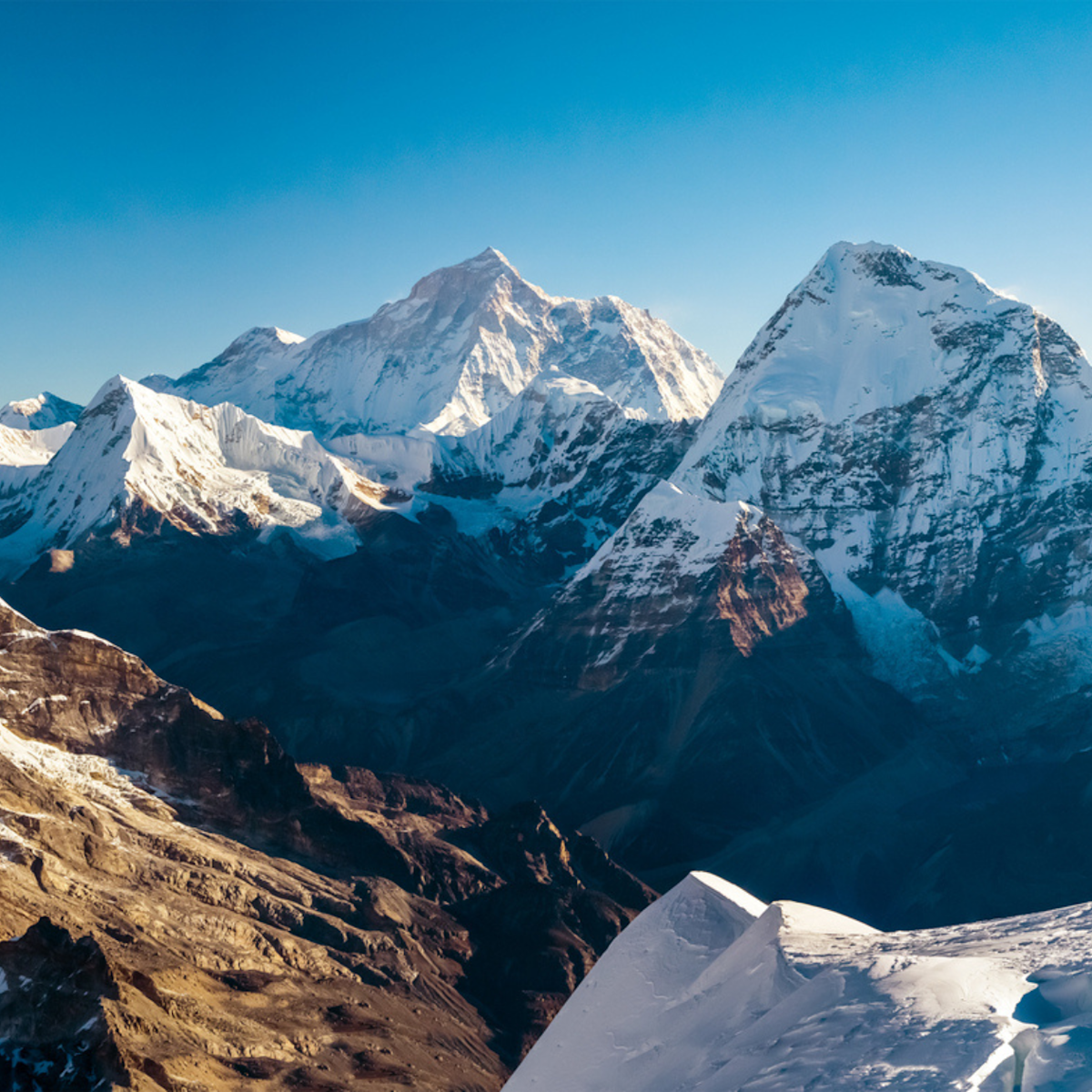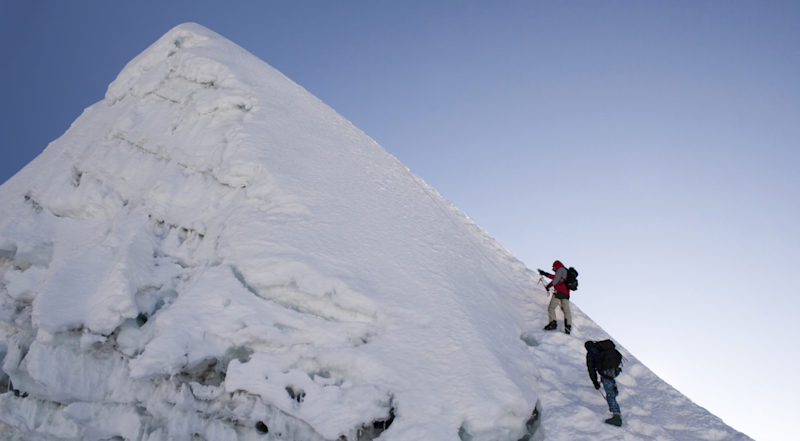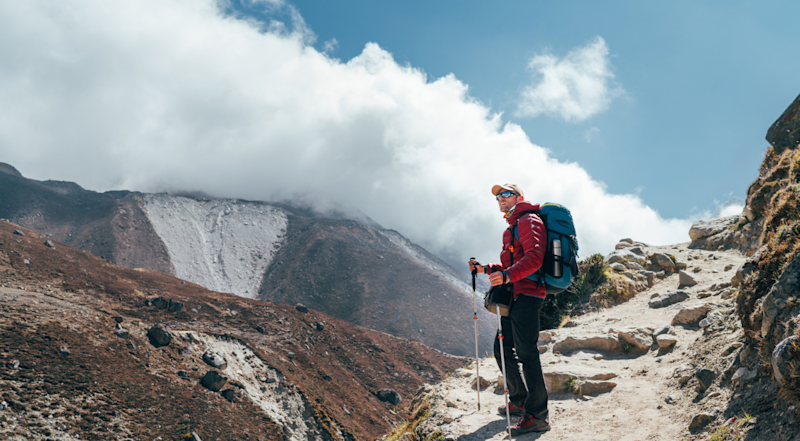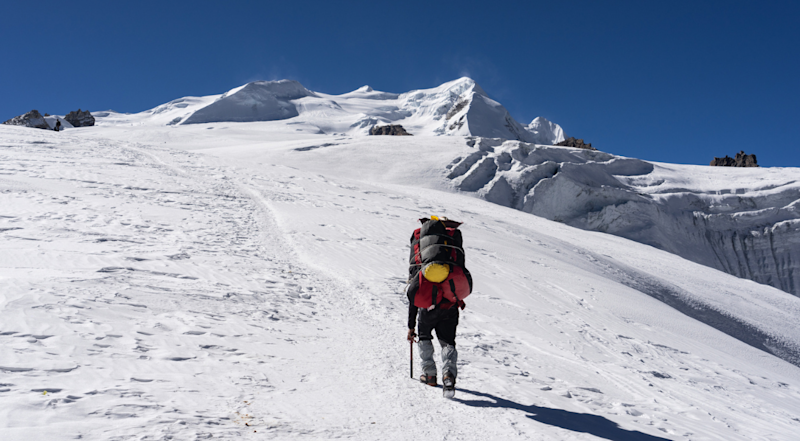
The Most Challenging Trekking Peaks in Nepal – And Why They’re Worth the Effort
Nepal’s toughest trekking peaks push your limits with epic views and serious challenges. Ready for a high-altitude adventure that demands skill, grit, and the right gear? Discover the climbs that only the bold dare to conquer.

by Emma Marais
8 min read
Overview:
- Welcome to the high-stakes side of the Himalayas.
- What makes a trekking peak “challenging”?
- The most challenging trekking peaks in Nepal
- What climbers gain from tackling the hardest trekking peaks
- Preparation tips for experienced climbers
- Why it’s worth it (every freezing, thigh-burning step)
- Frequently asked questions
- There’s hard — and then there’s Himalayan hard.
Welcome to the high-stakes side of the Himalayas.
What makes a trekking peak “challenging”?
Altitude: Anything over 6,000 meters (19,685 ft) turns into a lung-busting, frostbitten challenge. Technical terrain: Think mixed rock and ice climbs, exposed faces, and knife-edge ridges. Remoteness: Some of these peaks take days to even reach base camp. Weather: Expect high winds, unpredictable snowstorms, and serious cold. Minimal support: These climbs are often semi-expeditions. You carry gear. You cross glaciers. You fix ropes. This isn’t a casual hike.
The most challenging trekking peaks in Nepal
Kusum Kanguru (6,367 m) – A technical beast in the Khumbu
Why it’s hard: Three summits. Sheer rock walls. Knife-like ridgelines. Skills needed: ice axe, crampons, rope skills, and real stamina. Fun fact: Very few climbers make the main summit. Most settle for the lower west peak.
Kyajo Ri (6,186 m) – Hidden gem for alpine junkies
Why it’s hard: Multi-pitch climbing, crevasses, and steep ice. Best season: Autumn or spring for stable conditions. Why it’s worth it: The summit view stretches from Cho Oyu to Everest.
Chulu West (6,419 m) – Big, brutal, and beautiful
Why it’s hard: Long approach, high exposure, and brutal summit days. Altitude risk: Very high. Acclimatisation is essential to avoid altitude sickness . Bonus pain: The approach itself takes stamina and commitment.

Mera Peak (6,476 m) in winter – The altitude monster
Why it’s hard: The summit day is long and icy. Oxygen is thin. Technical level: Low on paper, but in winter, everything is harder. Reward: One of the best panoramic summit views in Nepal.
Lobuche East (6,119 m) – The hard hitter.
Why it’s hard: Sharp summit ridge, steep icy slopes, and no room for error. Why it’s better than Island Peak: Fewer climbers, better views, and it’s more challenging. Climber tip: You need solid rope work and stamina for the final push.
Island Peak (Imja Tse) – Easy? Not always.
When it gets hard: Post-monsoon season, icy ridges, and overconfident climbers. The reason it remains worthwhile is because Follow Alice organises excellent trips here, providing a solid introduction to ropes, ladders, and glacier work.
What climbers gain from tackling the hardest trekking peaks
True isolation – You’ll go days without seeing another team. Alpine skill growth – Rope systems, crampon techniques, and glacier crossings. Mental strength – You’ll question life, then summit, then want to do it again. Viewpoints transform everything, such as witnessing the sunrise on Everest from a different peak.
Preparation tips for experienced climbers
Train like you’re summiting three Everests.
Cardio is king: Think long uphill hikes with a weighted backpack, stair climbing, trail running, or anything that gets your heart pounding for hours, not minutes. Strength matters too: quads, glutes, calves, and core. If you neglect strength, your knees will hate you around Day 6. Altitude acclimatisation practice: if possible, train at higher elevations or arrive in Nepal early to trek and acclimatise. Mental stamina drills: It’s cold. You’re tired. You still have 800 metres to go. Mental prep (e.g., visualisations, meditation) can be game-changing.

Gear up like a pro (or suffer).
Mountaineering boots with crampon compatibility Ice axe and crampons (especially for winter Mera or Kyajo Ri) Helmet and climbing harness (some routes demand roped sections) A layered clothing system for sudden weather swings Climbing gloves (dexterity + insulation) Sunglasses and sunscreen for intense UV at high altitudes Sleeping bag rated for -20°C or colder Hydration system (many climbers dehydrate badly in the cold) Snacks you’ll still want to eat at 6,000 m (Pro tip: Snickers > granola bars)
Permits and paperwork
NMA climbing permit (price varies by season and peak) TIMS card ( Trekkers’ Information Management System ) National park or conservation area permit Climbing insurance with helicopter evacuation coverage (non-negotiable)
Why it’s worth it (every freezing, thigh-burning step)
You earn every inch.
Views that take your breath away
Frequently asked questions
How long does it take to climb a trekking peak in Nepal?
Do I need to have climbed before?
When’s the best time to climb?


